We are living in a personalization-driven world. Consumers want to feel like they are special, that the brands they interact with know them and understand their needs. In order to deliver on those desires, businesses need to personalize their interactions with customers as much as possible. That means customizable products and experiences that make the customer feel unique. But personalization is not just about giving customers what they want – it’s also about collecting data from them in order to create even better personalizations in the future. And for consumers to be willing to hand over that data, businesses need to build trust first and foremost.
There are a few key ways to build trust with consumers: being transparent about how data will be used, offering customer service that is responsive and helpful, and delivering on the promises made. personalization can only be successful if brands first take the time to establish trust with their customers. Only then will they be able to create the truly personalized experiences that consumers crave.
What are your thoughts? Have you found personalization to be important in your interactions with brands? Or do you prefer a more generic approach? Let us know in the comments!
B2B Marketing News: Personalization’s Rising Value For Brands, Advertisers Seek More CMOs, & Instagram’s New Reels Features
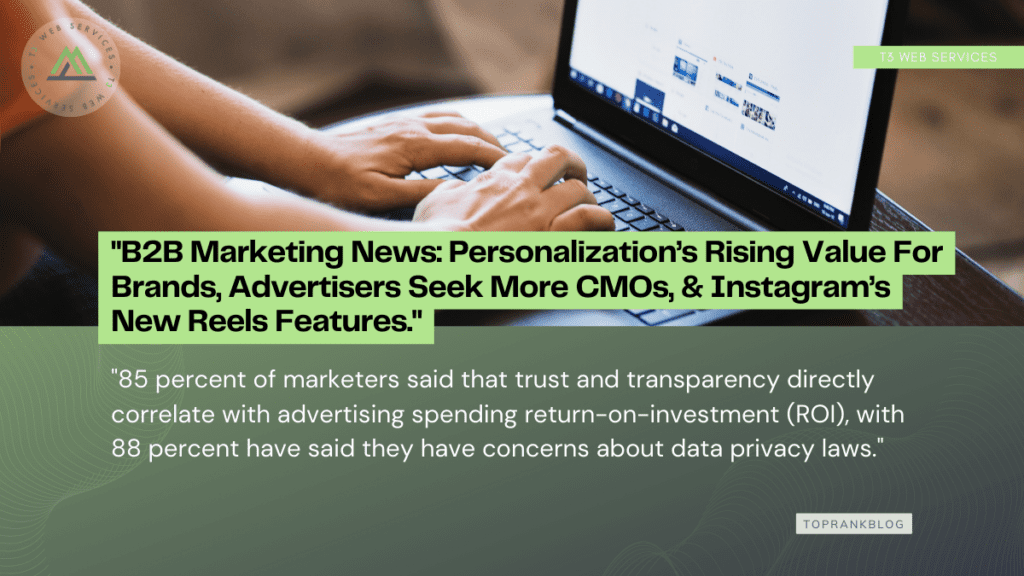

B2B customer journeys that begin at review sites are significantly shorter
B2B buying journeys average 192 days in length, dropping by 63 percent when a buyer’s first touch is with a review website, while the buying process is significantly longer than average when first-touch channels are social or paid media — three of several findings of interest to B2B marketers contained in newly-released report data. MarTech
Why personalization is more important than ever for brands [Report]
62 percent of consumers have said brands that don’t deliver personalized experiences will lose their loyalty, a figure that’s up seven percent from rates in 2021, while some 63 percent said they are fine with brand personalization efforts as long as they use voluntarily-shared first-part data, according to recently-released survey data. SmartBrief
For Many Americans, Trust in Businesses Must Be Earned
54 percent of U.S. adults have lost trust in a company or brand, with 42 percent switching to a competitor’s product, in an environment where 42 percent have said that they tend to trust companies and 39 percent said they don’t — four of the findings contained in newly-released survey data of interest to digital marketers. MarketingCharts

https://www.toprankblog.com/2022/07/b2b-marketing-news-070822/
7 Tips For Building SEO + UX-Minded Navigation
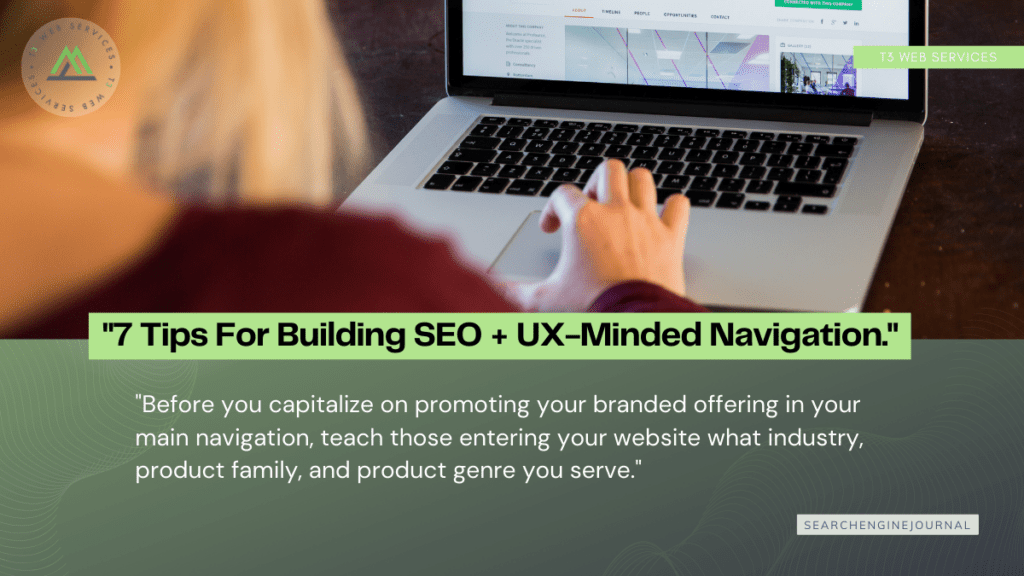

1. Analyze Google Analytics User Flow
Within your Google Analytics profile, navigate to Users Flow within the Audience segment. Initially, we want to see what the common user pathways are on the site.
It is important here to review where someone landing on the homepage will do next as well as those that land on an internal page.
2. Investigate Internal Site Search
Content that is not readily available or understood in the main navigation. You can do this by analyzing Site Search in Google Analytics.
Take a look at specific search terms the users type in, whether they refine their searches, and their exit rates.
This helps you understand what links and content they expect from your site, and what content they didn’t find in your main navigation.
3. Visualize User Interaction With A Heat Map
Pay close attention not only to the main navigation click movement of the homepage users but also to internal page user actions.
Most importantly, it is critical to review how behaviors change between desktop and mobile users.

https://www.searchenginejournal.com/seo-ux-navigation/452636/
How to use relationships to level up your SEO
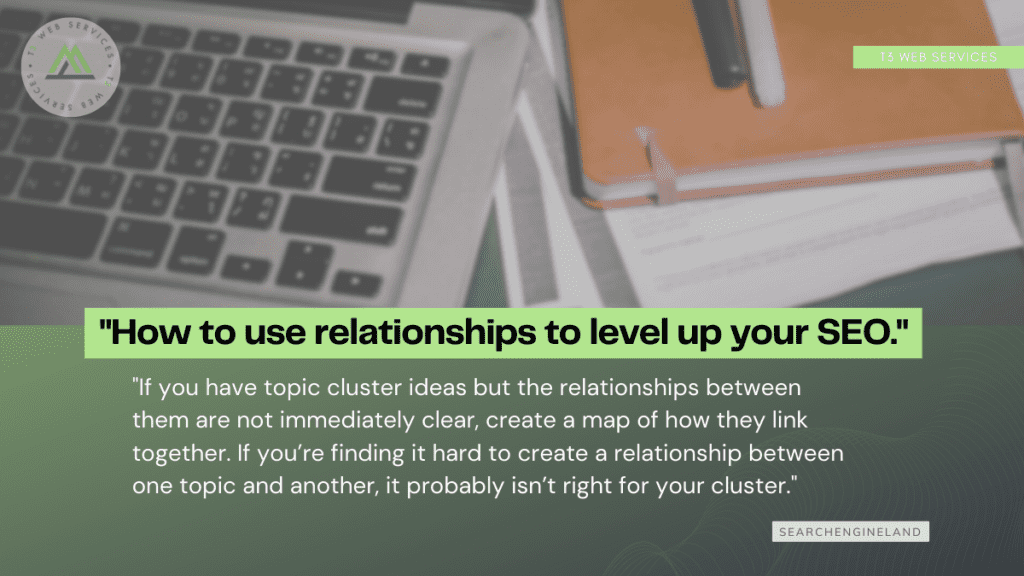

1. Content
Writing great content for semantic search goes way beyond simple keywords. It must contain the relevant entities and consider the relationships between them.
Why do entities matter in SEO content?
Entities are important for SEO content because they are connected by relationships. These entities and the relationships that associate them are what Google is using to determine meaning and context within any piece of written content.
All these things and concepts are related to other things and concepts.
Some of these relationships are very strong, others are weaker.
Some entities are widely used in text across the web in lots of different contexts, and others are used sparingly in specific circumstances.
2. Pillar pages and topic clusters
Getting each individual piece of content right is only one part of the puzzle.
The next challenge for a content strategist or SEO is to consider and maximize relationships between different topics and content.
Just like each term and entity, each piece of content covers a topic that is related to other topics. These relationships can be powerful or insubstantial.

https://searchengineland.com/use-relationships-level-up-seo-386352
14 Must-Know Tips For Crawling Millions Of Webpages
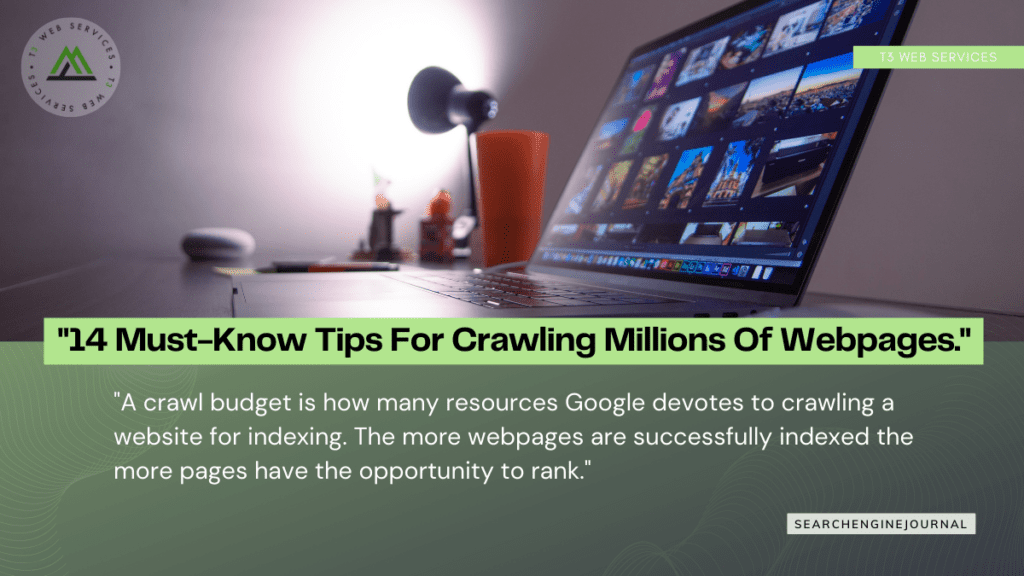

1. Make The Site Ready For Crawling
An important thing to consider before crawling is the website itself.
It’s helpful to fix issues that may slow down a crawl before starting the crawl.
That may sound counterintuitive to fix something before fixing it but when it comes to really big sites, a small problem multiplied by five million becomes a significant problem.
2. Ensure Full Access To Server: Whitelist Crawler IP
Firewalls and CDNs (Content Delivery Networks) can block or slow down an IP from crawling a website.
So it’s important to identify all security plugins, server-level intrusion prevention software, and CDNs that may impede a site crawl.
3. Crawl During Off-Peak Hours
Crawling a site should ideally be unintrusive.
Under the best-case scenario, a server should be able to handle being aggressively crawled while also serving web pages to actual site visitors.
But on the other hand, it could be useful to test how well the server responds under load.

https://www.searchenginejournal.com/crawling-millions-webpages-tips/456455/#close
3 Simple Questions that Help You Write Better Headlines


Once you’ve learned how to write a headline with your target keyword phrase, use the prompts below to go beyond basic headline formulas.
These questions help ensure your title is the most effective it can be:
- Who will benefit from this content?
- How do I help them?
- What makes this content special?
The answers to these questions most likely won’t produce the exact headline you’ll use, though.
Rather, they’ll help shape your headline draft into a persuasive message that reaches and connects with the people you want to attract to your content. They’ll also help you write killer subheadings.

https://copyblogger.com/write-better-headlines/
Is Your Content The Right Fit For Your Audience? Learn About Context Marketing And How To Apply It
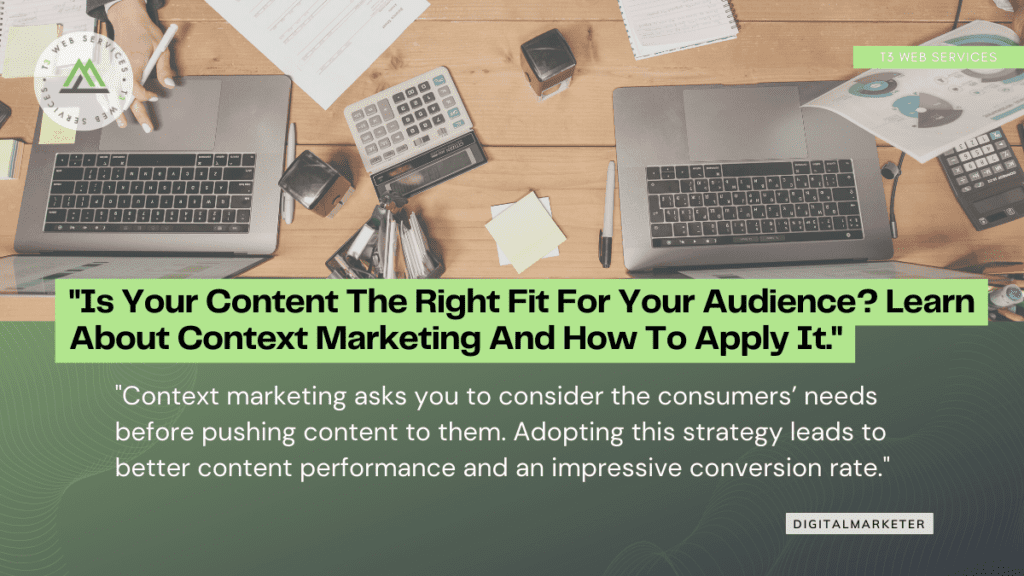

Context Vs Content Marketing: The Guide
Brands that regularly advertise know all about content marketing but here’s a quick recap just in case.
Content marketing is all about content creation and sharing. You can create multiple forms of digital content pieces, including but not limited to short and long-form videos, static graphics, 2D/3D animations, blog posts, and 360 videos. This content is intended to generate interest in a brand but doesn’t specifically use consumer preferences as insights.
Context marketing is different because it uses data-driven insights to target your consumers at the most relevant times. Brands can select from a variety of options to create a contextual campaign that makes consumers pay attention because it promotes something they need at any given moment.
1. Use Popular Platforms to Craft Experiences
Brands can utilize context marketing to create relevant experiences for consumers right on their cellphones.
2. Place CTAs in Effective Spaces
All branded content being pushed in online spaces should include a Call To Action (CTA). Context marketing works when a potential consumer sees your advert in a space where it’s hyper-relevant.
3. Create Spaces for Social Sharing
Virality can make or break brands in this digital age. Brands can amp up their shareability with a focused context marketing strategy.

https://www.digitalmarketer.com/blog/is-your-content-the-right-fit-for-your-audience/
MarTech Replacement Survey: Which features are important to marketers?
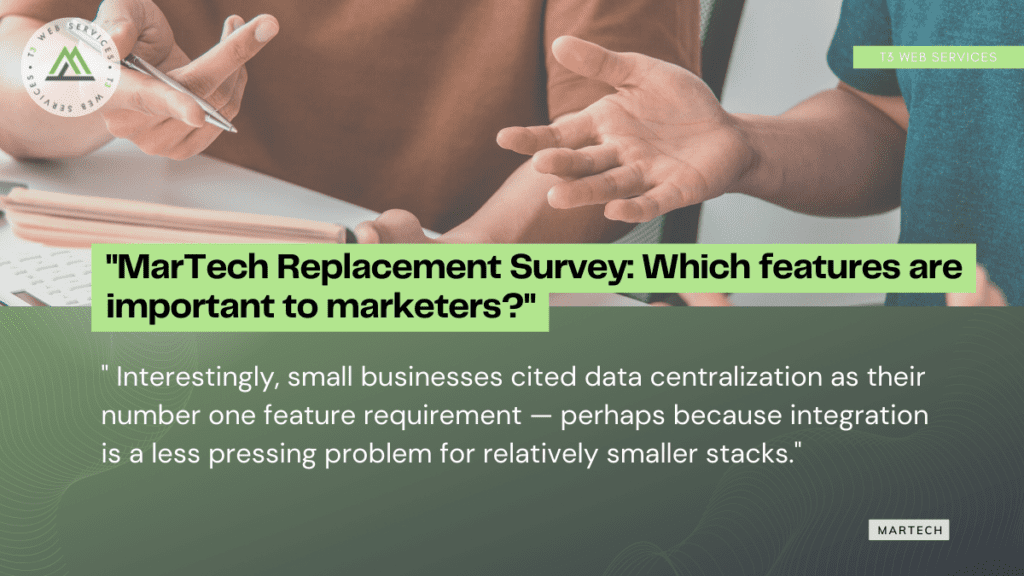

The key reason for replacing both homegrown and commercial applications was the need for better features, according to the 2020 MarTech Replacement survey. But what features were marketing organizations looking for? Let’s take a deeper dive.
Integrations are key. There are three ways to go with your marketing technology stack.
- Build a set of fully integrated solutions that can communicate with each other and readily share data.
- Tolerate a stack where key solutions are integrated while others are not.
- Permit a collection of siloed solutions where communication is minimal or non-existent.

https://martech.org/martech-replacement-survey-which-features-are-important-to-marketers/


Leave a Reply